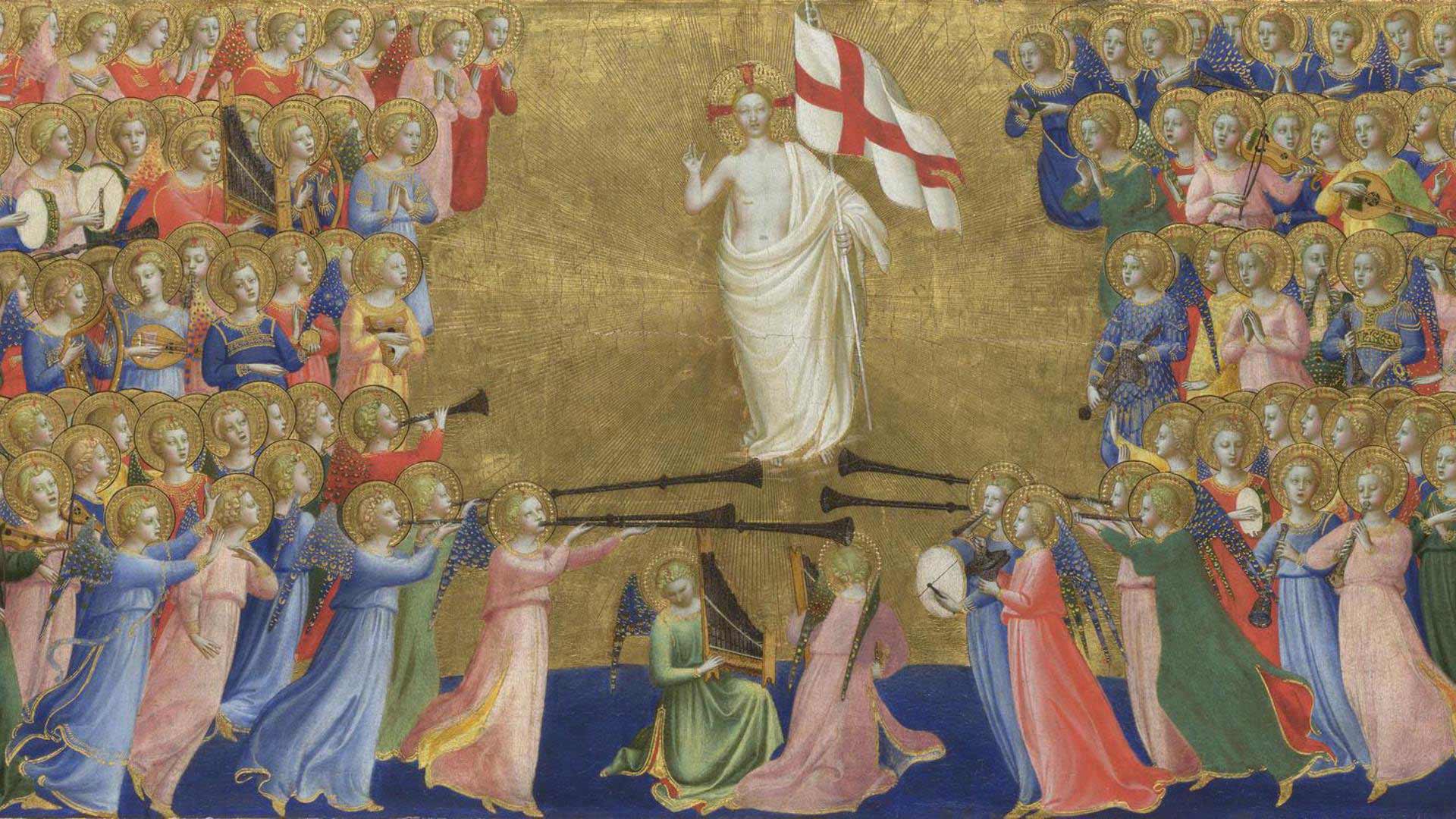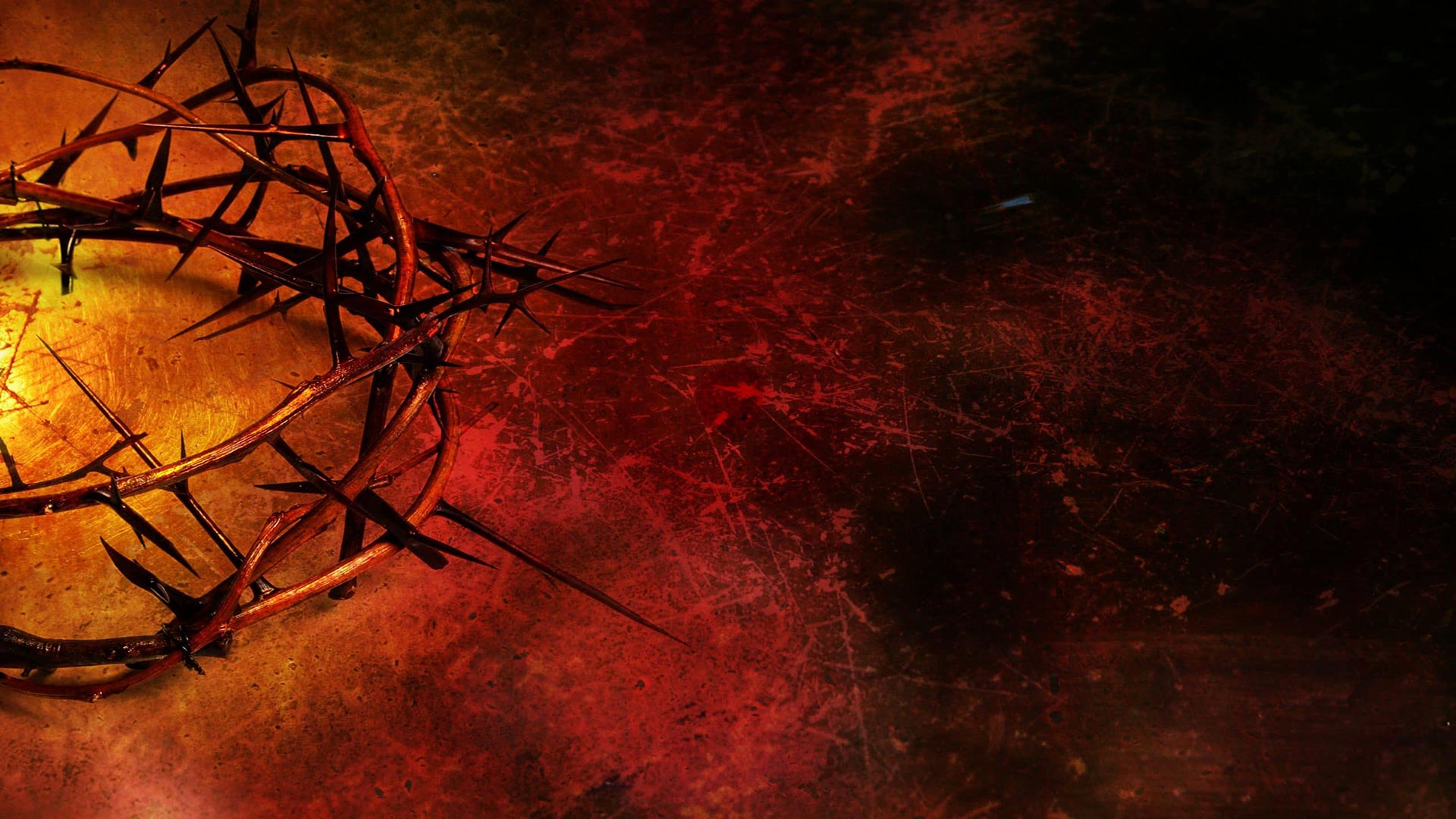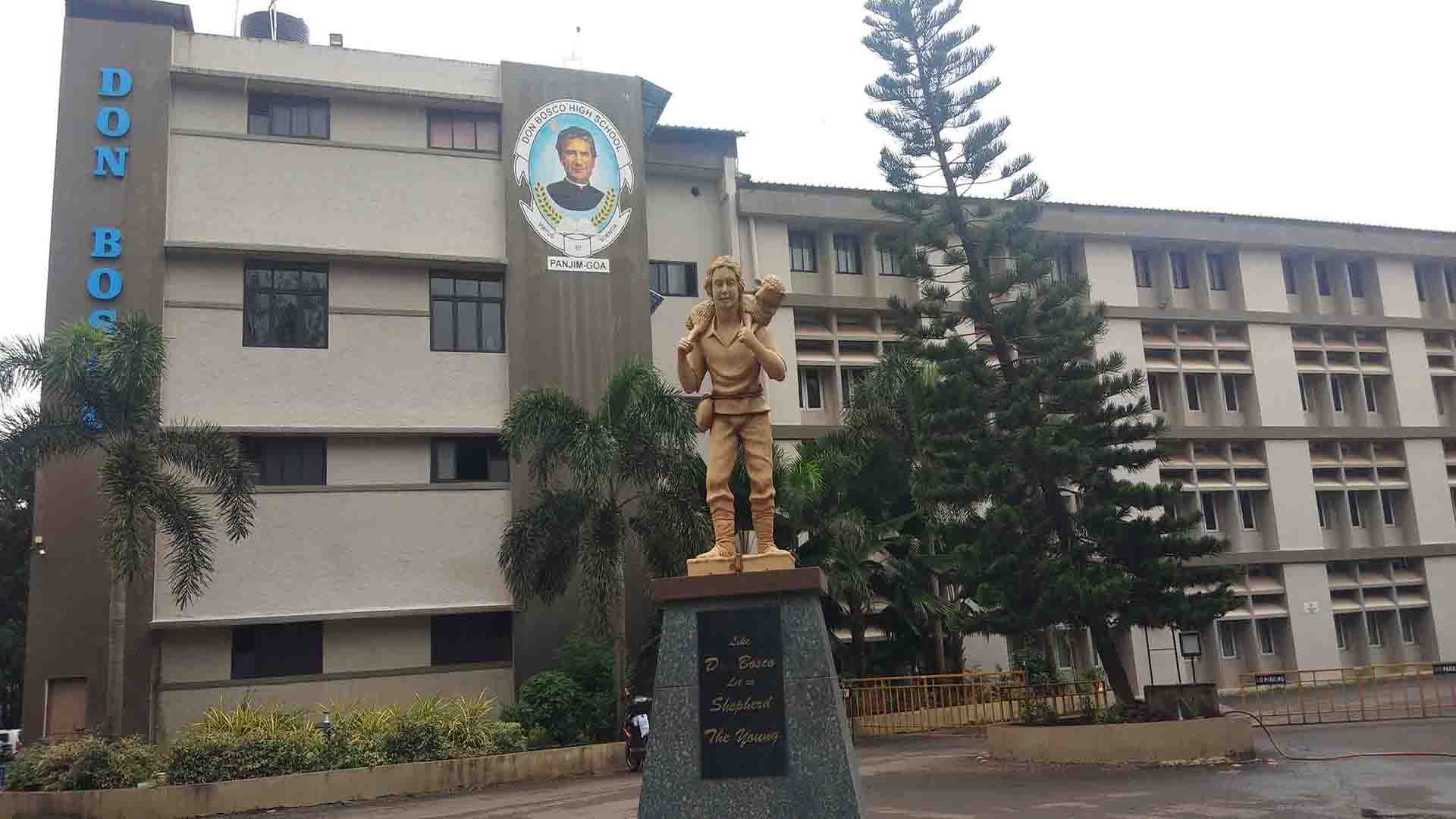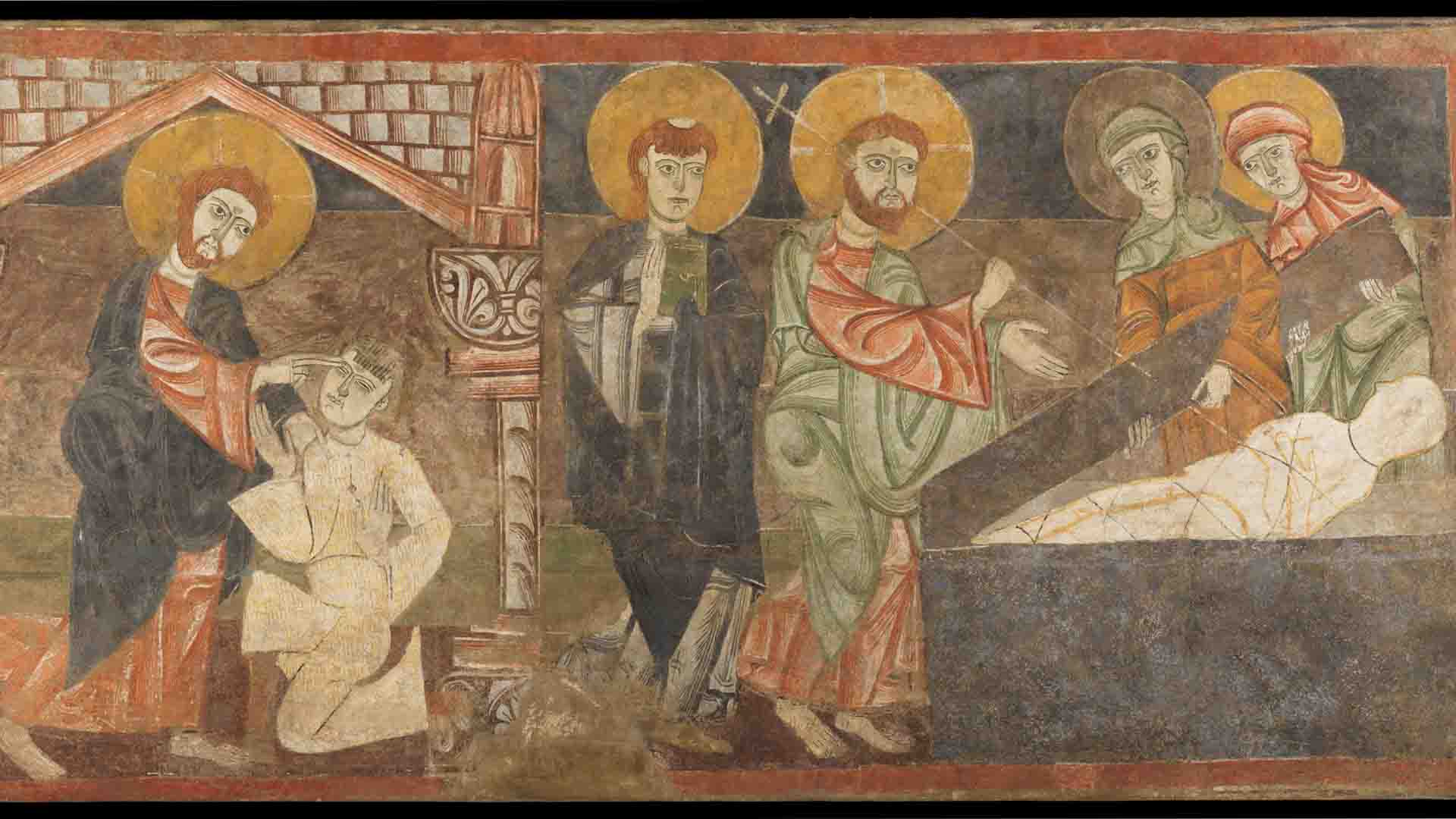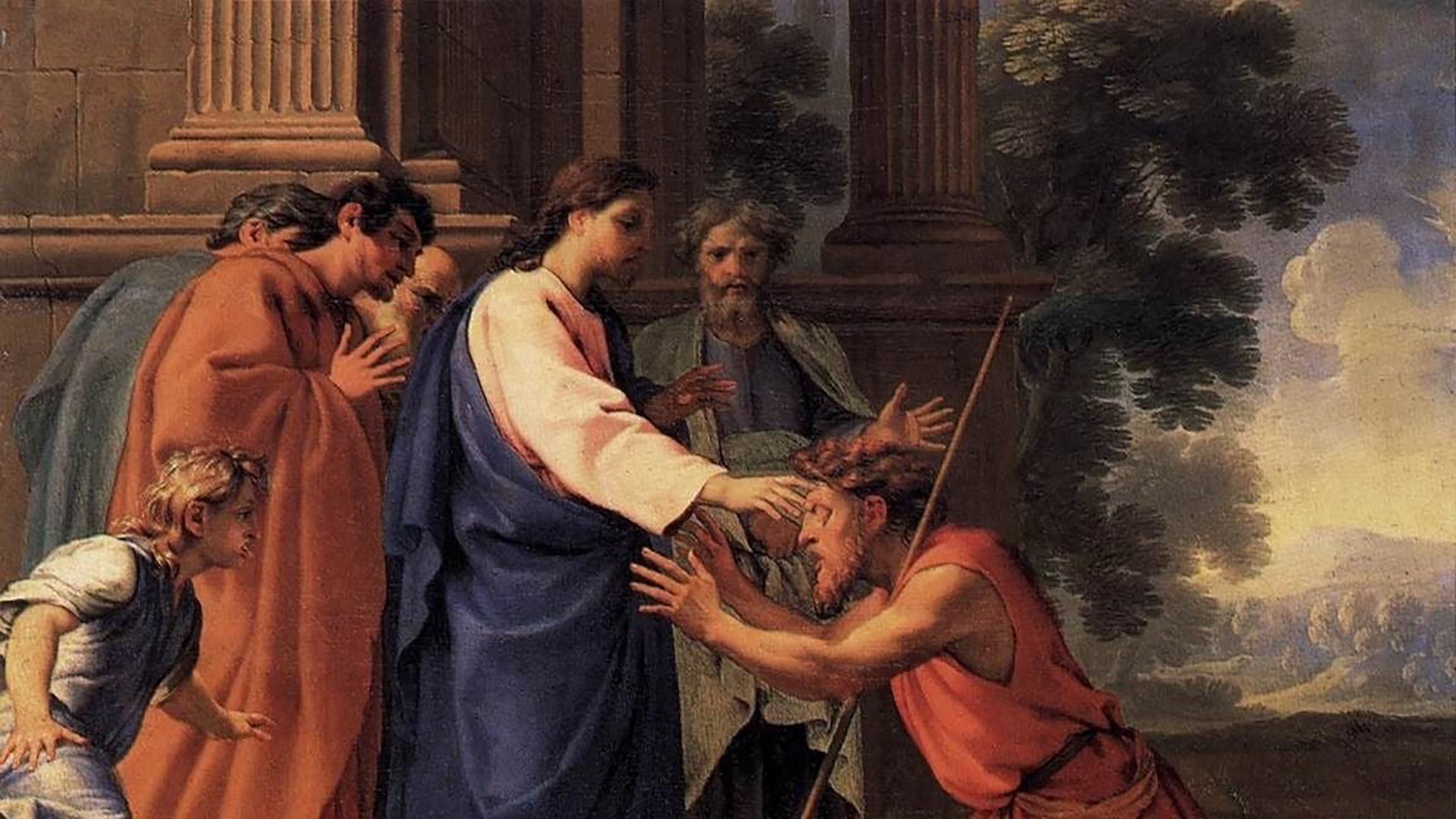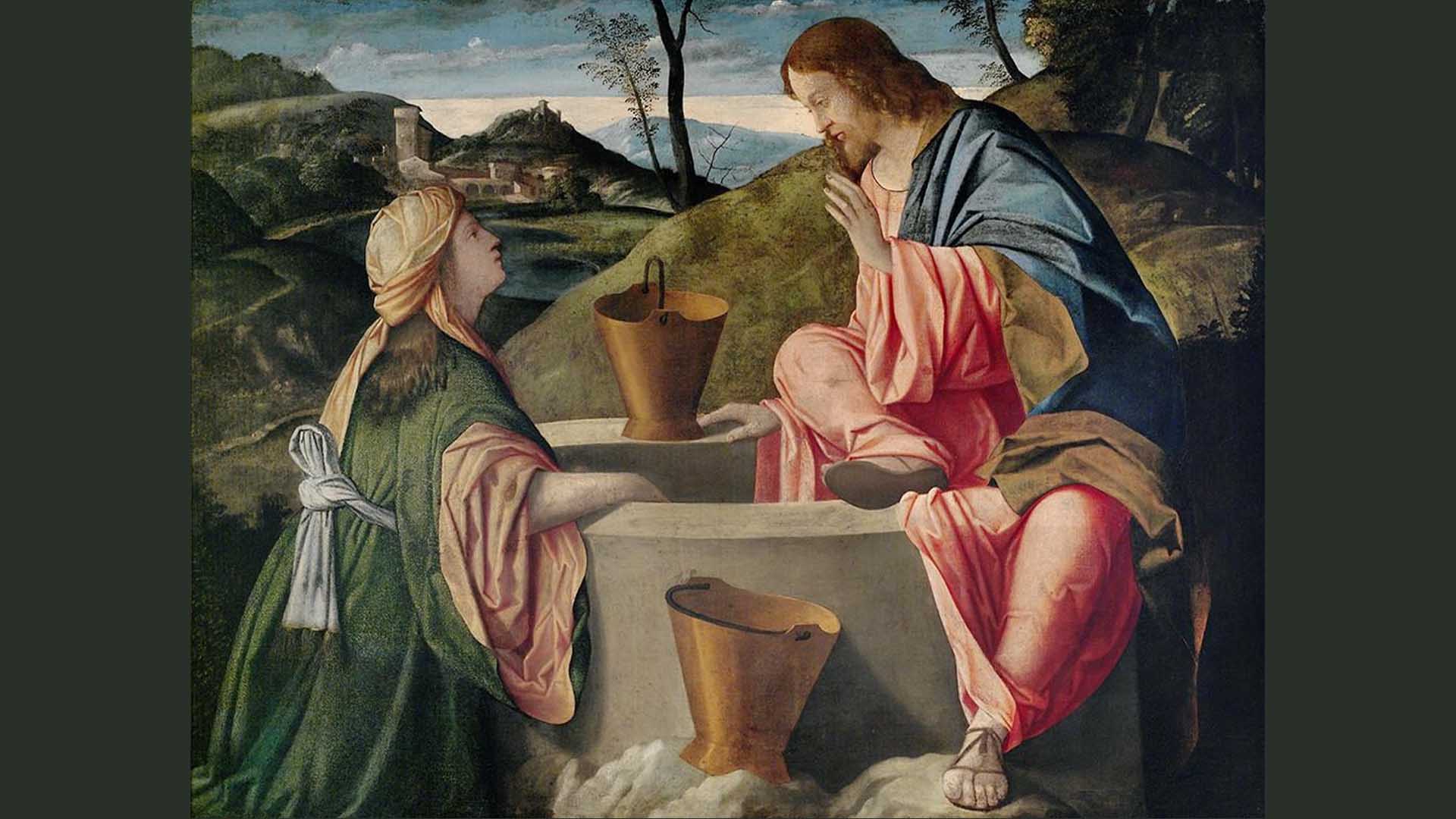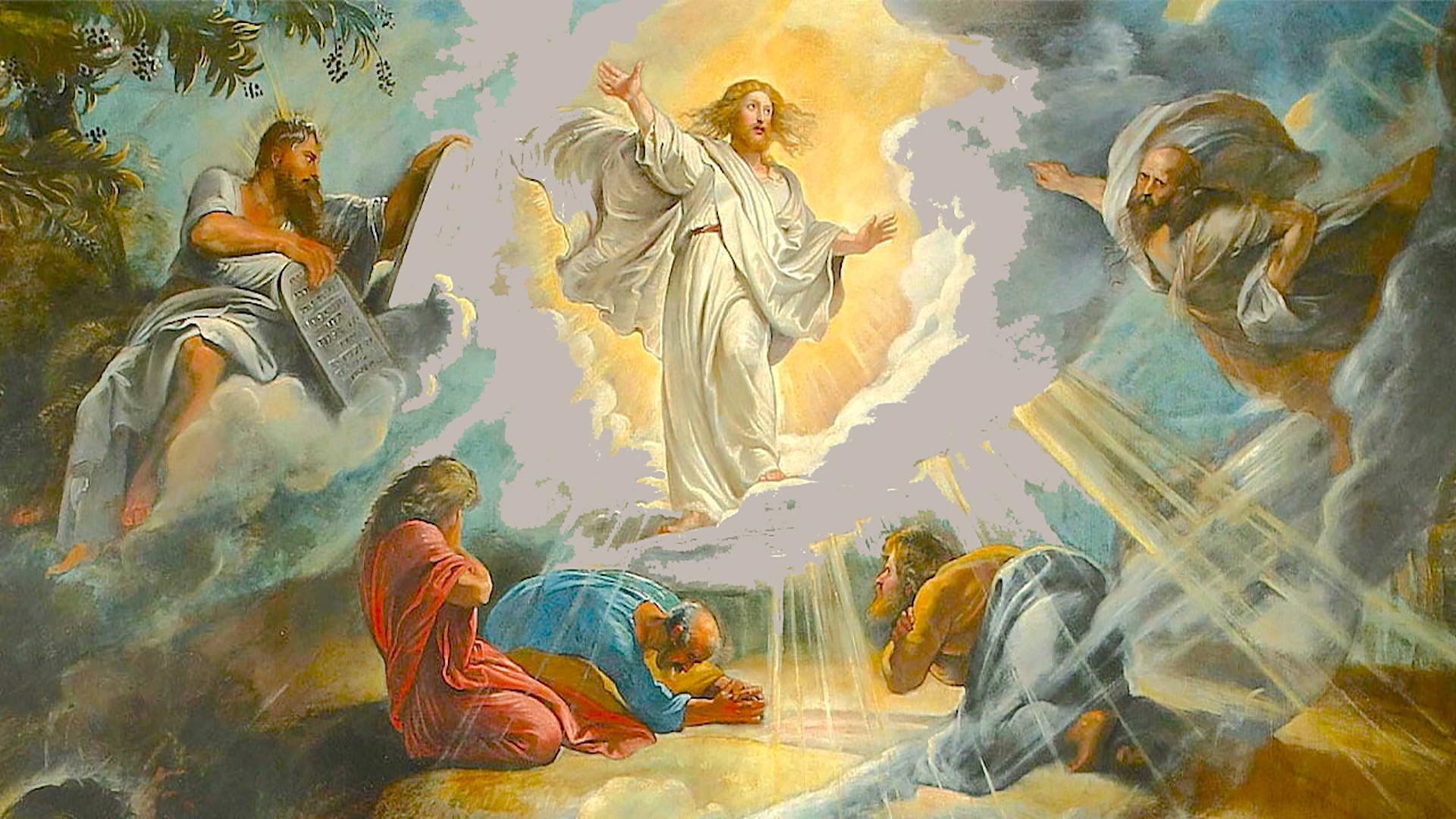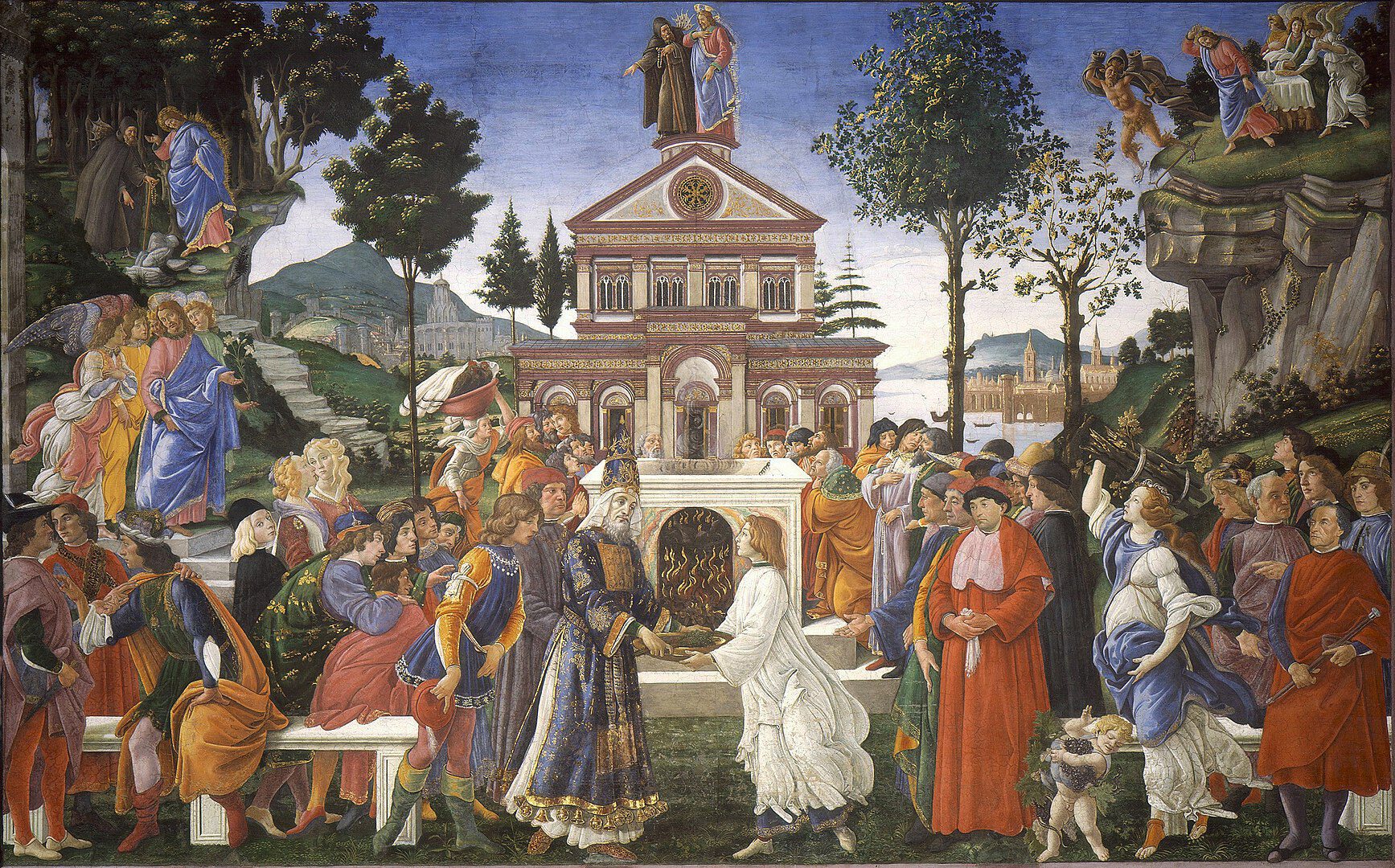Why Easter is the bedrock of our faith!
It's thanks to Easter that we are Christians. Whereas the joyful birth of Jesus contained a promise, this was fulfilled through His sorrowful Death and glorious Resurrection. This unparalleled event was the ultimate answer to those who had rejected His luminous earthly passage abounding in wise teachings and unprecedented miracles. He who had come to complete the Jewish religion thus founded a new and sublime religion – Christianity – that would be open to the peoples of the world.
The panoply of readings of the Easter Vigil and Mass tells us the story of the redemption of the world. The seven readings[1] from the Old Testament and two from the New Testament are “chosen and structured to lead the worshipping assembly into a deep contemplation of the mystery of salvation history—from the beginning of time, when God created the world in all its wonder, to this moment of the Church gathered in prayer, to the end of time when all things will be brought to perfection once again in God's love.”[2] In other words, the readings tell of the Redeemer about whom the prophets had long foretold.
The Easter Sunday (morning and evening) Mass offers a different set of Readings, of which the Second Reading and the Gospel have internal choices.[3]
Starting with the Gospel: obviously, it is about the Resurrection! If we read the four Evangelists, we cannot fail to see the multiple differences in their accounts. However, the disparity lies only in the secondary details: while St John (in all probability) wrote a first-hand account, the rest of the Evangelists wrote theirs based on eyewitnesses. Most importantly, none are at variance on the fundamental issue: that the tomb was found without the Lord early on Sunday morning. It was not a desecration; it was undoubtedly the Resurrection!
In fact, those variations only go to show that the Resurrection accounts were not tailored; they were written at different times, between circa AD 66 and 110, in this order: Mark (AD 66-70), Matthew and Luke (AD 85-90), and John (AD 90-110). And even if they had never been written, there would still have been other evidence of the stunning event. St Luke’s Acts of the Apostles was put together between AD 70-90, and Paul’s letters between AD 50-58. Clearly, these latter are the earliest extant texts about the Resurrection, predating the first of the Gospels by over a decade. Would God the Father have allowed the most important event of all of history to go unrecorded?
Very pertinently, the first two Readings are taken from the accounts of those two travelling companions, Luke and Paul, respectively. The text of the Acts (10: 34a, 37-43) refers to the by-now fiery St Peter chastising those who put Jesus to death. “But God raised Him on the third day,” he states, “and made Him manifest, not to all the people but to us, who were chosen by God and witnesses, who ate and drank with Him after He rose from the dead.” Faithful to the Divine Master’s command, the future First Pope testifies: “To Him all the prophets bear witness that every one who believes in Him receives forgiveness of sins through His Name.”
Even more clinching is St Paul’s testimony relating to the Resurrection. Here is one of Christ’s worst persecutors, whose conversion history is so well known that it can be dispensed with here. In today’s Second Reading (Col 3: 1-4), he most convincedly points to Christ “seated at the right hand of God”, and invites us to set our minds on things that are on high. It is the same Paul who famously said, “If Christ has not been raised, your faith is futile and you are still in your sins.” (Cor 15: 17) He championed Christ’s cause – His physical Resurrection – which prompted Roman emperor Nero to order his beheading.
Let alone dying like Paul, had we only believed more firmly in the Resurrection and spoken more ardently about this turning point in the history of humankind, by now there would have been only Christian apologists walking the earth and no apologetic Christians in sight! After two thousand years of Christianity, can we say we have done enough?
Let us therefore resolve to rise above our frailties – to rise with Christ and live with Him forevermore, with Him who is indeed the Resurrection and the Life!
[1] The Vigil readings for all Year cycles are as follows: Gen 1: 1-2, 2; Gen 22: 1-18; Ex 14: 15-15, 1; Is 54: 5-14; Is 55: 1-11; Bar 3: 9-15, 32 – 1, 4; Ezek 36: 16-28; and at the Mass thereafter: Rom 6: 3-11 [Year A]; Mk 16: 1-7 [Year B], Lk 24: 1-12 [Year C]
[2] http://pastoralliturgy.org/resources/1301OurStoryOfSalvation.php#:~:text=The%20nine%20readings%20of%20the,to%20this%20moment%20of%20the
[3] The Second Reading can be either from Colossians (3: 1-4) or Corinthians (5: 6-8). And while the first choice of Gospel text is from St John (20: 1-9), one may alternatively take any one of the Gospel texts of the Easter Vigil Mass: Mt 28: 1-10 marked for Year A; Mk 16: 1-7, for Year B; or Lk 24: 1-12, for Year C. The Lectionary also specifies that at evening Mass, Gospel of the Third Sunday of Easter, Year A, may be read.
Banner: https://www.nationalgallery.org.uk/paintings/fra-angelico-christ-glorified-in-the-court-of-heaven
The Suffering Servant
Today is Palm Sunday. The day begins with the blessing of palms with holy water outside the church building. The Gospel read here is from St Matthew (21: 1-11) in Year A, St Mark (11: 1-10) or St John (12: 12-16) in Year B, and St Luke (19: 28-40) in Year C. The priest then leads the congregation in a festive procession into the church, celebrating Our Lord’s messianic entry into Jerusalem.
However, at the Mass soon thereafter, the mood changes from joyful to sombre, marking the beginning of the Holy Week. While the first two Readings and the psalm – Is 50: 4-7; Ps 21: 8-9, 17, 18a, 19-20, 23-24; Phil 2: 6-11 – remain the same for cycles A, B and C, the Gospel changes from year to year, highlighting the three Synoptics: St Matthew (26: 14-27, 66), St Mark (14: 1-15, 47), and St Luke (22: 14-23, 56), respectively. They account for happenings going from the Last Supper up to the Death of Jesus.
St John is thus the only evangelist whose Gospel is not read at this Mass. The Beloved Disciple – who offers a unique perspective on the Divine Master, more theological and mystical – is very especially reserved for Maundy Thursday (Jn 13: 1-15) and Good Friday (Jn 18: 1-19, 42), besides two weekday readings. While the Gospel on Thursday focusses on the Last Supper, on Friday we hear a Passion narrative that begins with Gethsemane and ends with Our Lord’s Death on the Cross.
Coming now to the three Readings of today: in the First Reading (Is 50: 4-7), who is Isaiah talking about? He could well be referring to himself or to an archetypal prophet, for all prophets suffered persecution. Better still, Isaiah could be referring to the One who was to come: Jesus the Messiah! Jesus, the Servant of God, was an unparalleled Master, who was nonetheless obedient to the will of His Father in Heaven. Jesus is the model Servant who trusts in God and prevails over His enemies.
That the life of Jesus was a fulfilment of the prophecies of yore becomes clear in the richly textured Gospel passage (Mt 26: 14-27, 66) on the Passion of Christ. The text comprises Jesus’ scandalous betrayal by Judas Iscariot, as foretold at the memorable Passover meal; His moments of intense prayer on the Mount of Olives; His acts of extreme goodness even when His soul was sorrowful to death; His unlawful arrest and summary trial by the high priest; His shameful denial thrice over by Peter; His monstrous condemnation by Pilate; His distressful way to Calvary; His crucifixion, death, and burial.
St Paul in the Second Reading (Phil 2: 6-11) points to the humility of Jesus. He who was fully divine willingly became fully human; He who was “in the form of God did not count equality with God (…) but emptied Himself, taking the form of a servant, being born in the likeness of men.” His total obedience led to His humiliation, but which in turn engendered His exaltation. God gave him a name “which is above every name, that at the name of Jesus every knee should bow (…) and every tongue confess that Jesus Christ is Lord, to the glory of God the Father.”
None who have carefully listened to the three readings of today will remain unmoved. May this Holy Week cause us to reflect on the human condition and our divine commitment. Some of Our Lord’s sufferings are today inflicted upon His Living Body, the Church; some of them are perpetrated by us from within. God might sometimes allow our humiliation and suffering, but never our annihilation; our faith, hope and trust in God’s protection will ensure our final exaltation. May the story of Jesus Christ, the Suffering Servant, and His supreme love for humanity bring about our conversion and sanctification.
Don Bosco’s: after a kind of absence

Way back in the 1970s, how did our parents choose from half a dozen schools in Panjim? Don Bosco’s must have been the most obvious choice, given its infrastructure and proven track record; it was a dream school to many from far and wide and all stations in life.
Don Bosco’s had by far the largest educational campus in the then union territory of Goa. The main, (then) two-storeyed edifice, spacious, bright and airy, housed the school, the priests’ residence and the boys’ boarding (especially during the Persian Gulf boom). The building was cut across by a passage leading to a new shrine dedicated to Our Lady of Fatima, where Mass for the students, on First Fridays, was a spiritual feast. Elsewhere on the campus, sports facilities were among the best at the time. And to wrap it all up, the school motto, Virtus et Scientia, pointed to a holistic education and recipe for happiness.
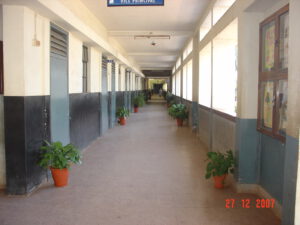
But what man is happy? Only "he who has a healthy body, a resourceful mind and a docile nature," says a philosopher. To our good fortune, that was quite the staple diet we students grew up on; it let Bosco boys stand out not only in academics, but also in intra- and extra-mural pursuits that included music (remember the brass band?); sports (particularly football, basketball and hockey); elocution, debate, and so on. ‘All-rounder’ was a buzzword, in the run-up to the examination of life.
Needless to say, school was no cakewalk; sometimes there was waywardness, dejection and frustration along the way. But, through it all, the aspirations of the Salesian brotherhood shone bright, distilled into that martial anthem whose lyrics and melody render me nostalgic before they finally pep me up:
We the proud Don Bosco boys
brave Don Bosco brotherhood.
Nursing in our heart the joys
Of true knowledge and the good.
Forward march with equal pace
Through our country’s sounding ways
Treading where our fathers trod
In the glorious light of God.
We who are the happy band
Will not shrink from sweat and strife.
In the service of our land
For a brighter cleaner life.
We will toil till out of gloom
Day shall dawn and deserts bloom.
And our country’s blessed soil
Shall be green and gold for God.
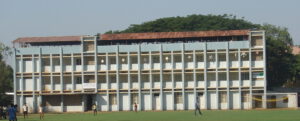
Don Bosco’s was clearly ahead of its time. It had a vibrant ‘Past Pupils Association’. When alumni found it tough to secure proper lodgings in the bustling capital, a hostel was built for the purpose, at a far end of the campus. So much for connectedness. But perhaps even more distinctive was the Oratory, an institution inspired by the founder St John Bosco himself. The Saint of Turin had realised, in the wake of the Industrial Revolution, that young minds longed for more than just hard skills – they sought loving kindness!
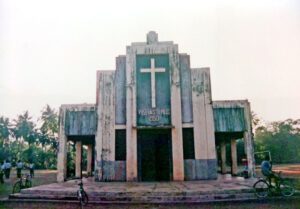
For long, the Oratory functioned in the desacralized, old Fatima chapel located right in the middle of the vast estate; inscribed on its façade were the words ‘Visitasti Nos’ (You Visited Us, in Italian) commemorating the coming of the Pilgrim Virgin statue there in 1950. The place was a safe haven to a motley crowd that included the less fortunate, poor, and abandoned youth. And even those who did not much fancy the place did feel its magnetic pull at some time or other in their lives!
All things considered, it was a matter of pride to belong to a school where one trained in good citizenship of the church, the country and the world. Catechism and Moral Science classes virtually set the tone. And who can ever forget ‘Don Bosco’s Seven Tips to Boys’ bulleted in the school handbook? They always bear repeating:
- Do not waste time.
- Do not offend God.
- Do not overeat before studying.
- Avoid bad companions as poisonous snakes.
- Choose some studious boys as friends.
- When it’s time to play, get in there and play.
- Do not daydream! Keep your mind on your books when studying.
- Above all, PRAY.
Hopefully, a lot of that wisdom has stayed with the “proud Don Bosco boys” and been passed on to generation-next!
Oh, how all of this seems far back, yet close at hand!... Am I lost in reverie? Be that as it may, our alma mater has her feet firm on the ground; even if at times we have taken her for granted, she, like a doting mother, has been there for us. And whereas her alumni have grown old, she has, thankfully, only grown big! Here I wish to pay homage to my teachers, some of them priests and brothers; and to remember my classmates too: we are now a scattered lot, aren’t we? No wonder it feels like a kind of absence….
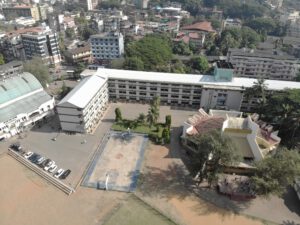
On the occasion of the triple Jubilee, I salute the Salesian family for holding on. Don Bosco’s has grown into a splendid oasis amidst a slowly emerging concrete jungle; but then again, weeds of the world must not be allowed to close in on it! Don Bosco’s has come a long way, and the Founder’s spirit must live on: this will be a clincher for twenty-first century parents waiting to choose from more than half a dozen schools in the city!
(First published in the Souvenir Back to School)
(Banner: https://sdbpanjim.org/newsdetails.php?id=1505; Pics 2 and 3, courtesy Eustaquio Santimano, Flicker)
A Peek into the Resurrection
To our world filled with inordinate love for life and a concomitant fear of suffering and death, God speaks in a special way today. The long and short of His message is that we must trust in Him alone, for nothing is permanent except Him; so, we would do well to fix our gaze on eternal life rather than set our heart on earthly promises.
On this fifth Sunday of Lent, the three Readings give us a supernatural perspective on life and death. Traditionally called Passion Sunday, today marks the start of ‘Passiontide’, a season that invites us to begin a close preparation for Easter. So, in this run-up, let us seek to better understand the Passion, Death and Resurrection of Our Lord and Saviour and to see those stages in our day-to-day life as Christians. The Readings gear us up mentally and spiritually for the greatest mystery of all times.
The First Reading (Ezek 37: 12-14) is drawn from Ezekiel, a major prophet of the Old Testament. Ezekiel focuses on how God is always faithful and keeps His promises. He makes known God’s mercy and justice known through his vision of dry and scattered bones vivified in the valley. The bones represent the Israelites, exiled and dispersed, whereas their revival stands for God’s saving grace. Church Fathers, like St Justin, St Irenaeus and St Tertullian regard Ezekiel’s vision as a proof of the resurrection of the bodies on the last day.
Ezekiel is never quoted word for word in the New Testament, yet in today’s Gospel reading (Jn 11: 1-45) his prophecy is fulfilled. Jesus raises Lazarus in a miracle several notches higher than the cure (last Sunday) of the blind beggar at Siloam. The beggar’s congenital blindness was not a chastisement; Lazarus’ illness was “not unto death”. Jesus delays his coming to Bethany, so he might not merely have to cure but to raise his friend to life – “for the glory of God, so that the Son of God may be glorified by means of it.” It is the Lord’s final “sign” to the Jews: that they may believe in His divinity and the power of the true God.
Jesus takes yet another step, by clearly proclaiming “I am the Resurrection and the Life; whoever believes in me, even he dies, will live, and everyone who lives and believes in me will never die.” No doubt, such statements cross the limits of human logic; but then, look at Thomas: he would later be dubbed ‘the doubting’ one but is presently ready to die with the Lord!. Are we ready to leave behind our earthly knowledge and pride and believe in His logic?
For their part, the disciples do not seem to understand what Jesus means by saying that Lazarus “has fallen asleep”; they had probably forgotten how He had once raised the daughter of Jairus! And the Bethany household too were bemused by Jesus who said “Your brother will rise again.” When? Martha in her limited human comprehension took it to be the resurrection on the last day.
What if we looked through Martha’s glasses: what would we see? And now that we know what happened two millennia ago, do we believe that He is the Resurrection and the Life? Are we ready to leave behind our earthly possessions and wear spectacles of faith? Can we confidently say that ours is an awesome God, who never fails – and never fails us?
But then, it all seems so paradoxical… The One who gave life to Lazarus was put to death soon thereafter! And Mary who had anointed Jesus and wiped His feet with her hair was only prefiguring his burial. And Martha who knew Jesus so well was so naïve as to say, “Lord, by this time there will be an odour, for he has been dead four days,” as though dissuading the Lord from performing so clean a miracle that was waiting to happen.
But all is grist that comes to the mill of the Author of Life. He can turn bad odours into fragrances, transform death into life. But alas, that fragrance of divine fidelity was paid back with the odour of human infidelity: life was repaid with death. The Jews left unmoved by the marvel wrought by the Lord nonetheless moved hurriedly to complain against Him to the Sanhedrin. And the rest is history…
Today, we are those Lazaruses wounded by sin; unless rescued by Christ, we shall remain like dry bones in this valley of tears. St Paul (Rom 8: 8-11) reminds us that the Spirit of God, of Him who raised Jesus from the dead, dwells in us. We must pray that, in untying our sinful bandages, He forgives us our sins. As Pope John Paul II once said, “The real strength of a man lies in the fidelity of his witness to the truth and in his resisting flattery, threats, misunderstandings, blackmail, even harsh and relentless persecution. This is the path on which our Redeemer calls us to follow him.”[1]
[1] From the Passion Sunday sermon of Pope Saint John Paul II, 2002 https://www.catholicculture.org/culture/library/view.cfm?recnum=4206
Banner: https://www.metmuseum.org/art/collection/search/471846
The Challenge of the Light
On Laetere Sunday, we are called to joyfully anticipate the victory that will be won and the joy that will be ours at Easter. We are half way through Lent and have progressed by way of prayer, fasting and almsgiving. And particularly through the Liturgy of the Word, we have meditated on the human condition and our response to God’s loving invitation down the ages.
Looking back, on the first Sunday of Lent, the First Reading dwelt on the creation of the world and the sin of our first parents; on the second, the call of Abraham, the father of the people of God; on the third, we read the story of Moses leading his people out of Egypt; and today, the fourth Sunday of Lent, we witness the rise of David (Hebrew for ‘Commander’) as ruler of the united kingdoms of Israel and Judah (1 Sam 16: 1.6-7.10-13). God bid Samuel to anoint the youngest son of Jesse (‘God exists’) with oil, in his hometown Bethlehem.
Thus, David, a shepherd, replaced the first king, Saul, who had disobeyed God, and “the Spirit of the Lord came mightily upon David from that day forward.” Interestingly, a millennium later, Jesus (‘God saves’) was born in Bethlehem (‘House of Bread’) and would eventually declare Himself the Good Shepherd. That city in the hill country of Judah was located about six miles north-west of Nazareth, where Jesus lived until he was thirty, and about five miles south of Jerusalem, where He would die, three years later. Thus ended the public ministry of God’s slain Lamb, so unprecedentedly full of miracles and blessings.
The Gospel of today (Jn 9: 1-41) speaks of one such miracle or "sign": the cure of a blind beggar. Inasmuch as the disciples were bent on knowing if that condition meant a chastisement, they seemed ‘blind’ too. The Master clarified that “it was not that this man had sinned, or his parents, but that the works of God might be made manifest in him.” Proclaiming Himself the “Light of the World”, Jesus sent the blind man to Siloam, which meant ‘The One Sent, the Siloah’. This was incipient baptism, carrying as it did a promise of sweet light and refreshing health to the weak and suffering[1]. Once cured, the man labelled Jesus “a prophet” and later acknowledged Him as the Son of Man. Clearly, he had received not only natural sight but also supernatural light!
Overawed by this occurrence, the local cabal began to work overtime and to close in on Jesus. The Pharisees spread a canard: “This man is not from God, for he does not keep the sabbath.” No doubt, Jesus had cured the blind man on a sabbath but, as elsewhere He had said, “the Sabbath was made for man, not man for the Sabbath. So, the Son of Man is lord even of the Sabbath.” (Mk 2: 23–28) But far from recognising Him as the Messiah, some Pharisees argued that he who has not kept the sabbath cannot be of God. They kept questioning the cured man, in the hope that he would retract his earlier statement, but he retorted: “You do not know where He comes from, and yet He opened my eyes. (…) Never since the world began has it been heard that any one opened the eyes of a man born blind. If this man were not from God, He could do nothing.”
In the face of such irrefutable logic, the only thing left to do was to hype the case against Jesus. The parents were called upon to confirm their son’s congenital blindness; they did, but pleaded ignorance as to the author of the marvel, for “the Jews had already agreed that if anyone should confess Him to be Christ, he was to be put out of the synagogue.” This was pure conspiracy! Alas, how many do the same today! They swim with the current, compromising their principles, that they may gain social acceptance and/or political mileage! Likewise, arm-twisting and intimidation are rampant; it is always the same old story of giving someone a bad name and hanging them!
At that time, Jesus was at the height of his ministry but also at the threshold of his Passion and Death. He was the Light of the World, the light shining in the darkness, but the world did not know Him (cf. Jn 1) The cure of the blind man shows Jesus to be the Messiah, who came into the world “that those who do not see may see, and that those who see may become blind.” That is, His light was “as mighty as to enlighten the lowly as it was to dazzle and blind the proud.”[2] To the Pharisees, who felt targeted by this powerful proclamation, He said that only physical, not spiritual, blindness could be excused.
In today’s topsy-turvy world, one sees right-minded persons banished whereas the doctrinally flawed promoted. But we are not to be frightened or discouraged. By our baptism, we have been invited to cross from darkness to light, from sin to supernatural life. St Paul in the Second Reading (Eph. 5: 8-14) exhorts us to “walk as children of light (for the fruit of light is found in all that is good and right and true), and try to learn what is pleasing to the Lord. Take no part in the unfruitful works of darkness but instead expose them.” Persevering in this mission through life is indeed the challenge of the Light.
[1] Abbé C. Fouard, Jesus Christ the Son of God. Goa: Don Bosco, 1960, p. 290
[2] Op. cit., p. 293
Drinking of the Living Water
Moses almost fell out with God for the sake of the people, and with the people for the sake of God. The dilemma faced by the most important prophet of the Old Testament is palpable: “What shall I do with this people? They are almost ready to stone me!”
It’s lonely at the top if we venture to do things alone! As for Moses, He had God on his side. He more easily saw God face to face and heard Him with his own ears than he could humour the fickle-minded and ungrateful Israelites. Here was a man who had led them out of an oppressive land, across the Red Sea, and into freedom; yet his countrymen pined for the fleshpots of Egypt!
That is what the story of humankind has on the whole been like, as a result of Original Sin. But God never gave up; He knew that doubting pointed to a seeking. He commanded Moses to strike the rock and quench the people’s physical thirst with water in abundance. For their moral guidance He declared the Ten Commandments on Mount Horeb. Yet, one day, there would be a New Moses issuing a new Commandment of Love and from His heart wounded by a lance on Mount Calvary would come forth blood and water.
In the Gospel (Jn 4: 5-42) Jesus offers the Samaritan woman that water of eternal life. At first, mistaking this for the same sparkling water of Jacob’s well that Jesus Himself had asked for, she was confused. But then, with that doubt dispelled, she goes to town, exclaiming, “Come, see a man who told me all that I ever did. Can this be the Christ?” Obviously, open to divine grace, she had welcomed the Word of God.
Meanwhile, Christ’s disciples kept urging Him to eat and satisfy His bodily need; they miserably failed to see the significance of what he had said: “I have food to eat of which you do not know.” What a far cry from the Samaritan, who had understood the Lord. The very perceptive St Augustine sees her therefore as the figure of the Church about to be founded. And the fact that it took a Samaritan woman to proclaim Jesus as that much-awaited Christ shows that none is a prophet in one’s own land, and the Church is destined to attract the whole wide world!
Of the Gospel as a whole, the Bishop of Hippo says: “The things spoken there are great mysteries, and the similitudes of great things; feeding the hungry, and refreshing the weary soul.”[1] Indeed, of great profit are his interpretations of the Lord’s weariness; the sixth hour; the five husbands; the fountain and the well; the living water; the harvest and the labourers, and, of course, of the woman herself.
God promises to reveal to us by degrees the treasures of His love, just as Jesus did to the Samaritan woman. He is the Bread and Water of Life, and woe to us who do not believe it. We, who are heirs to the Holy Scripture and the Apostolic Tradition, must not hang on to new-fangled notions; when we have the Living Bread and Water, of what use is it to pine for the flesh-pots of Egypt? And is it not downright stupid for us who have the Saviour of the World to dabble in a weird world of petty godmen who go about ruining souls?
Let us, then, turn a new leaf. Let us harden not our hearts but rather praise and thank God, bow down in worship and kneel before Him who made us (cf. Ps 94: 2, 6-7). Let us pray for the outpouring of the Holy Spirit into our hearts and be sure, as St Paul teaches in the Second Reading (Rom 5: 1-2, 5-8) that “since we are justified by faith, we have peace with God through our Lord Jesus Christ, through whom we have gained access by faith to this grace in which we stand, and we rejoice in our hope of sharing the glory of God.”
Above all, like the Samaritan woman, let us give witness and proclaim that Jesus is Lord. Pope John Paul has said, “The Church is very much aware of the specific contribution of women in service of the Gospel of hope.” Further, calling on laypeople in general, he states that “[a]s full sharers in the Church's mission in the world, they are called to testify that the Christian faith constitutes the only complete response to the questions which life sets before every individual and every society, and they are able to imbue the world with the values of the Kingdom of God, the promise and guarantee of a hope which does not disappoint.”[2]
[1] St Augustine, Homilies on the Gospel of John, Tractate XV, § 1. https://www.ccel.org/ccel/s/schaff/npnf107/cache/npnf107.pdf
[2] John Paul II, Apostolic Exhortation Ecclesia in Europa (28 June 2003), 41, 42 https://www.vatican.va/content/john-paul-ii/en/apost_exhortations/documents/hf_jp-ii_exh_20030628_ecclesia-in-europa.html#fnref72
Banner: https://www.columbiamuseum.org/collection-highlights/christ-and-samaritan-woman
Goencheo Mhonn'neo - III | Adágios Goeses - III
Damos aqui uma terceira lista de adágios,[1] extraídos do livro Enfiada de Anexins Goeses, obra bilíngue (concani-português), de Roque Bernardo Barreto Miranda (1872-1935).[2] E desta vez, transcrevemos cada um deles também na corrente grafia romana, embora ainda não estandardizada, da língua concani.
Salta logo à vista, na grafia moderna, o desaparecimento dos sinais diacríticos, a saber, os acentos agudo, grave e circunflexo, o til, a cedilha, o apóstrofo e o hífen, que haviam sido introduzidos por influência do português, durante séculos a língua oficial de Goa. Há quem diga que a romanização da escrita causou a eliminação ou deformação dos sons originais do idioma concani.[3] Mas isso, a ser verdade, não teria sido por inépcia do alfabeto romano que, por meio de certas convenções, bem podia dar conta do recado; mas simplesmente por falta de esforços concertados no sentido de padronizar a escrita.[4]
Será que não houve alguma eliminação ou deformação dos sons quando, por compulsões históricas, o concani – escrito originariamente em Goykanadi, alfabeto em desuso há seculos – passara a empregar os alfabetos devanagárico, canarês, malaiala e persa-árabe? Ora, no século XVI, perante esse mare magnum gráfico e a concomitante falta de meios de impressão, o alfabeto romano veio mesmo a calhar, e, ao longo do tempo, ajudou a engrossar a literatura profana e religiosa do concani, língua esta que, por estranho que pareça, havia os que a queriam somente como língua falada[5] e não literária.
Urge notar que perante o papel que a romanização da escrita teve na preservação e promoção da própria língua, é insignificante a alegada eliminação ou deformação dos sons que ela teria causado. Foram os utentes do concani romanizado, na sua esmagadora maioria católicos, que a usaram como língua literária, enquanto outros, por sinal, os hindus, tiveram unicamente o marata como sua língua literária, e só muito mais tarde, ou seja, nos anos sessenta do século XX, vieram a patrocinar o concani; e o fizeram usando caracteres devanagáricos, tal como em marata e hindi, de entre outras línguas indianas.
Em todo caso, deixemos aos peritos determinar se o que modernamente está assente na matéria da fonética e ortografia do concani se acha completamente livre da influência de idiomas dominantes, tais como o inglês e o marata. Aliás, não cremos que exista um sistema de grafia perfeito e igual para todos os tempos; o dinamismo linguístico não o permite.
Passando, em seguida, para o vocabulário dos utentes do concani romanizado: vê-se, no texto ora em consideração, que, sem aferrado purismo, em concani são usados muitos vocábulos portugueses (anjo; festa; padre-vigário; presidente), e vice-versa (betle/bétele; ceira), sendo esse fenómeno osmótico muito próprio de línguas vivas. Assim, longe de se corromperem, ambas as línguas se enriqueceram.
Por sua vez, Barreto Miranda, livre de preconceitos, valorizou não só a sabedoria do povo como também a língua da sua terra natal.
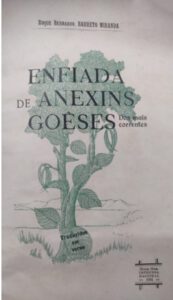
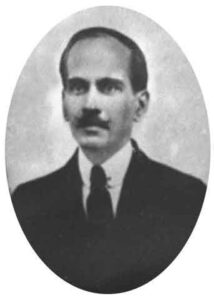
Concani | Tradução literal | Tradução livre
Sarquém anjyachém, cornyô devtçarachyô. | Sarkem anjachem; kornneo devcharacheo.
São de anjo as feições
e de demo as acções.
Uma lindíssima aparência
encobre, às vezes, má essência.
Pann’velichyá nibann moxingak udâk. | Panvelichea niban moxingak udok.
A água com que a betle[6]
(trepadeira) é regada,
apanha-a o moringueiro,
ao qual está enroscada.
P’lo benefício feito aos protegidos,
ficam, às vezes, outros atingidos.
Muy zahunn sakor khavunk zay. | Mui zavun sakhor khavunk zai.
Qual formiga tem de ser,
Quem queira açúcar comer.
Tem que ser, muito pequeno
e humilde, como formiga,
se quer viver bem, sereno.
Fest cortá ganv, Padre-vigarachém nanv. | Fest korta ganv, Padri-vigarachem nanv.
Fest cortá ganv, pirjentichém[7] nanv. | Fest korta ganv, presidentichem nanv.
É freguesia que festeja,
mas quem leva a glória da festa
é padre-vigário da igreja.
Melôlê gayêk bará xér dud. | Melole gaiek bara xer dudh.
A vaca que morreu,
doze ceiras[8] de leite
regularmente deu.
Depois da morte de alguém,
dizem dele sempre o bem.
Vhodd gharak poklé vanché. | Vhodd gharak pokle vanxe.
A casa tem o aspecto apalaçado,
mas ocos são os caibros do telhado.
A casa tem a aparência
de abastança, mas as arcas
não têm a suficiência.
Hatachim canknâm tçouchak arsó zay? | Hatachim kanknnam pollovpak arso zai?
Porventura há precisão
de espelho, para alguém ver
as joias da sua mão?
Não há nenhuma utilidade
servir-se de coisas ou meios,
de que não há necessidade.
Xettiló bôil baynt poddló, ganv ailó | Xettilo boil baint poddlo, ganv ailo
xêtt poddló, konui na ailó. | Xett poddlo, konnui na ailo.
Caiu no poço o boi dum mercador
a aldeia inteira lá compareceu.
Tendo, porém, caído o mercador
ninguém, pessoa alguma, apareceu.
Variante:
Xettitçó bôil mortá zalear, sogló ganv | Xetticho boil morta zalear, soglo ganv
pautá, xêtt melyar konui ye na. | pavta, xett melear konnui ie na.
Se morre um boi dum influente,
toda a aldeia comparece.
mas, em morrendo o influente,
nenhuma pessoa aparece.
Ek taltann taliyô vazâ nãy. | Ek talltan talleo vazonant.
Uma mão só, palmas
não pode bater,
sempre de outra mão,
tem que depender.
Há actos que não podem
ser postos em acção,
sem haver dependência
ou cooperação.
Tus kanddunn hatak fôdd. | Tus kanddun hatak fodd.
Pilando casca de arroz,
nada se adquiriu, senão
as empolas para mão.
De tanto trabalho feito,
não se auferiu proveito.
[1] Cf. Revista da Casa de Goa, Série II, No. 18, Set-Out 2022, pp. 33-34
[2] Roque Bernardo Barreto Miranda, Enfiada de Anexins Goeses, dos mais correntes (Goa: Imprensa Nacional, 1931)
[3] ManoharRai SarDessai, A History of Konkani Literature: from 1500 to 1992 (New Delhi: Sahitya Akademi, 2000), p. 22.
[4] “… representa os sons melhor do que os alfabetos indianos não modificados; e não implica nem com a música nem com os vocábulos.” (Mariano Saldanha, “A Língua Concani: as suas Conferências e a acção portuguesa na sua cultura”, in Boletim do Instituto Vasco da Gama, No. 71, p. 28)
[5] Não é de admitir que se tenha perdido toda a literatura em concani nas fogueiras da Inquisição, pois encontrar-se-ia algo desse registo pelo menos fora da jurisdição desse temido Tribunal.
[6] O mesmo que bétele, planta aromática (Piper betle) cultivada na Ásia.
[7] Corruptela de “presidente”.
[8] Antiga medida de peso, na Índia.
Publicado na Revista da Casa de Goa, Série II, No. 21, Mar-Abr 2023, pp. 59-62
https://acrobat.adobe.com/link/track?uri=urn:aaid:scds:US:a786b796-6b92-390e-a630-270a0648453a
Transfigured by the Cross
After God created man in His image and likeness, He always dialogued with humankind. But alas, the dialogue was soon interrupted by Original Sin; to resume it, God chose Abram, who thus became the first of the Hebrew patriarchs.
Abram, trusting solely in God’s Word, left his hearth and home in Ur, Mesopotamia, and walked into the unknown, to a place later identified as Canaan. The Lord had promised Abram: “I will make of you a great nation, and I will bless you, and make your name great, so that you will be a blessing (…) and by you all the families of the earth will bless themselves.” That is how Abram (meaning ‘God is exalted’) became Abraham (‘Father of many nations’).
The Jewish people are descendants of Isaac, son of Abraham and Sarah, and the genealogy of Jesus is traced to him. But equally pertinent is the fact that Abraham’s near-sacrifice of Isaac foreshadows Jesus’ sacrifice on the Cross. So much for the relevance of today’s First Reading (Gen 12: 1-4) to the season of Lent.
In the Gospel (Mt 17: 1-9) we note that the apostles Peter, James and John had a prevision of the Resurrected Lord. Jesus was “transfigured before them, and His face shone like the sun, and His garments became white as light.” And as though this were not enough, “there appeared before them Moses and Elijah [central Prophets of the Old Testament], talking with Him.”
At that point, Peter, as if to continue savouring the ambience, wished to stay put on Mount Tabor, but he was shaken out of his comfort zone when “a bright cloud overshadowed them, and a voice from the cloud said, ‘This is My beloved Son, with whom I am well pleased; listen to Him.’” The apostles, who were filled with awe, fell on their faces. Jesus bade them to rise and not fear. And just as they had an insight into the Lord’s divinity, even if no inkling into His mission on earth, they also felt emboldened to follow Him.
Their experience was brief but marvellous. Jesus wanted His Apostles to treasure its memory and later testify to its truth, for it would be precisely Peter, James and John who would be destined to witness the Agony in Gethsemani! So, “it was fitting that their faith should be fortified beforehand and their eyes illumined by the effulgence of the Godhead.”[1]
To what extent are you and I fortified – transfigured – by learning of the apostles' experience? Or, do we, like Peter, only wish to feel good and dream of happy days to come? The Transfiguration was – and will always be – a sign that Christ’s mission does not lend itself to trivialisation. Also, we must be conscious of our special mission as Christians, and never feel disheartened or tempted to give up. When we look around us and see people wallow in sin, we ought to see how their happiness is only a mirage.
On the other hand, those who have chosen the narrow part are the fortunate ones, for they are continually transfigured. Jesus had instructed the Apostles to “tell no one the vision, until the Son of Man is raised from the dead.” He indeed rose from the dead; and today, it behoves us to testify with conviction. But St Paul (2 Tim 1: 8-10) says that we have to also “take [our] share of suffering for the Gospel in the power of God who saved us and called us with a holy calling (…) and brought life and immortality to light through the Gospel.”
We can never thank God enough for our holy vocation. Being inheritors of an exalted tradition of faith in action, we are duty-bound to come out and call the world’s bluff. It is high time the world realised that by drawing back from the Cross it is in fact at cross-purposes with God’s loving plan of salvation. For our part, therefore, let us move forward decidedly and be transfigured by the Cross.
Banner: P. P. Ruben’s Transfiguration of Christ
https://www.ecwausa.org/the-transfiguration-of-jesus-in-matthew-17/
[1] Abbé C. Fouard, Jesus Christ the Son of God (Goa: Don Bosco, 1960), p. 263.
From Trials to Triumph
Today’s readings rewind to the creation of the human race and come back to where we stand today. They invite us to renew our faith in Him who sent His Only Son to save the world from the havoc caused by our first parents. The texts are cathartic, to say the least.
The First Reading (Gen 2: 7-9; 3: 1-7) speaks of the Garden of Eden, where it all began. If it wasn’t for Original Sin, the history of humankind would have been different, you may say. But then, why think only of the negative side of the Fall? God, who churns out good from just anything, tweaked it in our favour. Felix culpa, therefore, “O happy fault that earned for us so great, so glorious a Redeemer,” as the Exsultet (Paschal Vigil Mass hymn) chants.
In the Second Reading, St Paul (Rom 5: 12-19) gives a striking description of how “sin came into the world through one man and death through sin, and so death spread to all men because all men sinned.” Further, “if, because of one man’s trespass, death reigned through that one man, much more will those who receive the abundance of grace and the free gift of righteousness reign in life through the one man, Jesus Christ.”
In the Gospel (Mt 4: 1-11), Jesus, the New Adam, reverses the wrong that Adam committed in the Garden of Eden. And behold the spirit and substance of the Son of Man: whereas Adam feasted and fell, Jesus fasted and did not fall. Jesus in the desert represents the new Israel and the new Moses (both of whom spent forty years there) and the new Elijah (forty days). And what a pearl of wisdom He presents when tempted in His human state, by the devil: “Man does not live by bread alone, but by every word that proceeds from the mouth of God”. This has since become the one invigorating thought for when we are tempted by power, knowledge and riches that the world deceptively offers.
Humankind, marked by sin from the very inception, is now at the crossroads. We have taken God for granted; and, missing the point of his goodness, we have taken liberties. Having almost lost the sense of sin we are at a loss to know how to regain our innocence and obtain divine grace. Only to those with a pang of conscience, life feels like a combat, a minute-to-minute battle between the forces of good and evil, grace and sin, God and Satan.
How long can we continue thus? Life is short and unpredictable. Let us be steadfast in God’s love, embrace the Cross and experience God’s mercy. Let us not be disheartened, for if Jesus had to experience umpteen trials and temptations, why won’t we? But then, like Him, we too shall triumph over sin and see the light of the Resurrection.
Banner: Sandro Botticelli's Temptations of Christ, Sistine Chapel (1480-82)
Where are the Fishers of Men?
On the third Sunday in Ordinary Time, Isaiah points to Our Lord as the Light of the World; St Matthew recounts the first days of Christ’s ministry in the wake of St John the Baptist’s arrest; and St Paul exhorts the Corinthians to remain one in mind and heart.
In the First Reading (Is 8: 23 – 9: 3), God in His goodness promises to break “the yoke of [Israel’s] burden, and the staff of his shoulder, the rod of his oppressor”: He would let it triumph over the Assyrians, as He had done against the Midianites, using men armed with clay pots, torches and trumpets!
But even more significant is what Isaiah said about Zebulun and Naphthali[1], both located in Galilee. This region had a large, non-Jewish, immigrant population; hence called “of the Nations”, or “of the Gentiles”. Although the Galileans were thought to be of dubious ancestry, uneducated and seditious, they were in fact more faithful to God than others worshipping false gods. God rewarded Galilee by letting it play host to the Lord of lords and King of kings, who would be a Light to the Nations.
In the Gospel (Mt 4:12-23) we see the realisation of the Isaian prophecy. Bethlehem, where Jesus was born, and Nazareth, where He grew up, were towns in Galilee. It was here that Jesus undertook His three-year ministry. On feeling the heat of John the Baptist’s arrest, Jesus settled in the fishing village of Capernaum, “in the territory of Zebulun and Napthali”. He soon attracted Peter and his brother Andrew, James and his brother John, all humble fishermen, whom he would make “fishers of men”. And “He went about all Galilee, teaching in their synagogues and preaching the gospel of the Kingdom and healing every disease and every infirmity”. He urged them to “Repent, for the kingdom of Heaven is at hand” (Mt 4: 17), thus establishing a link with His Forerunner’s teaching.
But what is “repentance”? And is the kingdom of Heaven still “at hand”? Repentance is a change of mind and heart; it is a flight from sin to God. On the other hand, the hardening of our hearts to God’s call is tantamount to playing into the hands of the devil. “The kingdom of God [or ‘of Heaven’, to the Jews] means, then, the ruling of God in our hearts; it means those principles which separate us off from the kingdom of the world and the devil; it means the benign sway of grace; it means the Church as that Divine institution whereby we may make sure of attaining the spirit of Christ and so win that ultimate kingdom of God where He reigns without end in ‘the holy city, the New Jerusalem, coming down out of heaven from God’ (Rev. 21: 2).”[2]
Thus, Repentance and the Kingdom of God are not passé but vital to our everyday life. They must be uppermost in our minds, especially considering that enemies of the Church are lurking in the shadows. It may come as a shock – but it is a fact – that Rome herself is under siege, and so are you and me. Creditable Vatican observers state that the highest authorities, enchanted by the world, are playing into the hands of the evil one. Such reports are dubbed ‘conspiracy theories’ by those who wish to anaesthetize us but, really speaking, who can deny that idolatry, indoctrination, deception, division, demoralisation, and so on, are the handiwork of the devil? That theological errors abound, moral teaching is being undermined, and tragically, inter-religious ecumenism given the advantage over evangelisation, are signs of the times. If this is not the self-demolition of the Church that Pope Paul VI spoke of half a century ago, what is?
The situation has never been so bad, and it seems like the worst is yet to come. Therefore, what St Paul said to the Corinthians (1 Cor 1: 10-13, 17) is now relevant to a much higher degree: we have to be “united in the same mind and the same judgement”. Whereas in the early days philosophical schools caused discord; in our day and age, Humanism borders on the very denial of God.
On the other hand, in these trying times, where are those “Fishers of Men”? To neutralise nefarious influences, it is of the essence that the powers that be uphold the Apostolic Tradition, that is, “the transmission of the message of Christ, brought about from the very beginnings of Christianity by means of preaching, bearing witness, institutions, worship, and inspired writings. The apostles transmitted all they received from Christ and learned from the Holy Spirit to their successors, the bishops, and through them to all generations until the end of the world.”[3] That is what true Fishers of Men ought to do, Ad Gentes: to the Nations.
[1] Names of two of the twelve sons of Jacob who eventually formed the twelve tribes of Israel; they were brothers of Joseph, whom some of the siblings sold into slavery into Egypt, because they hated him. Only the tribes of Judah and Benjamin survived.
[2] Pope, H. (1910). Kingdom of God. In The Catholic Encyclopedia. New York: Robert Appleton Company. Retrieved January 20, 2023 from New Advent: http://www.newadvent.org/cathen/08646a.htm
[3] https://www.vatican.va/archive/compendium_ccc/documents/archive_2005_compendium-ccc_en.html (Compendium of the Catechism of the Catholic Church, Part One, Chapter two, question 12)
Banner: https://www.wallpaperflare.com/man-standing-on-boat-throwing-net-backlit-dawn-dusk-fisherman-wallpaper-alxue
